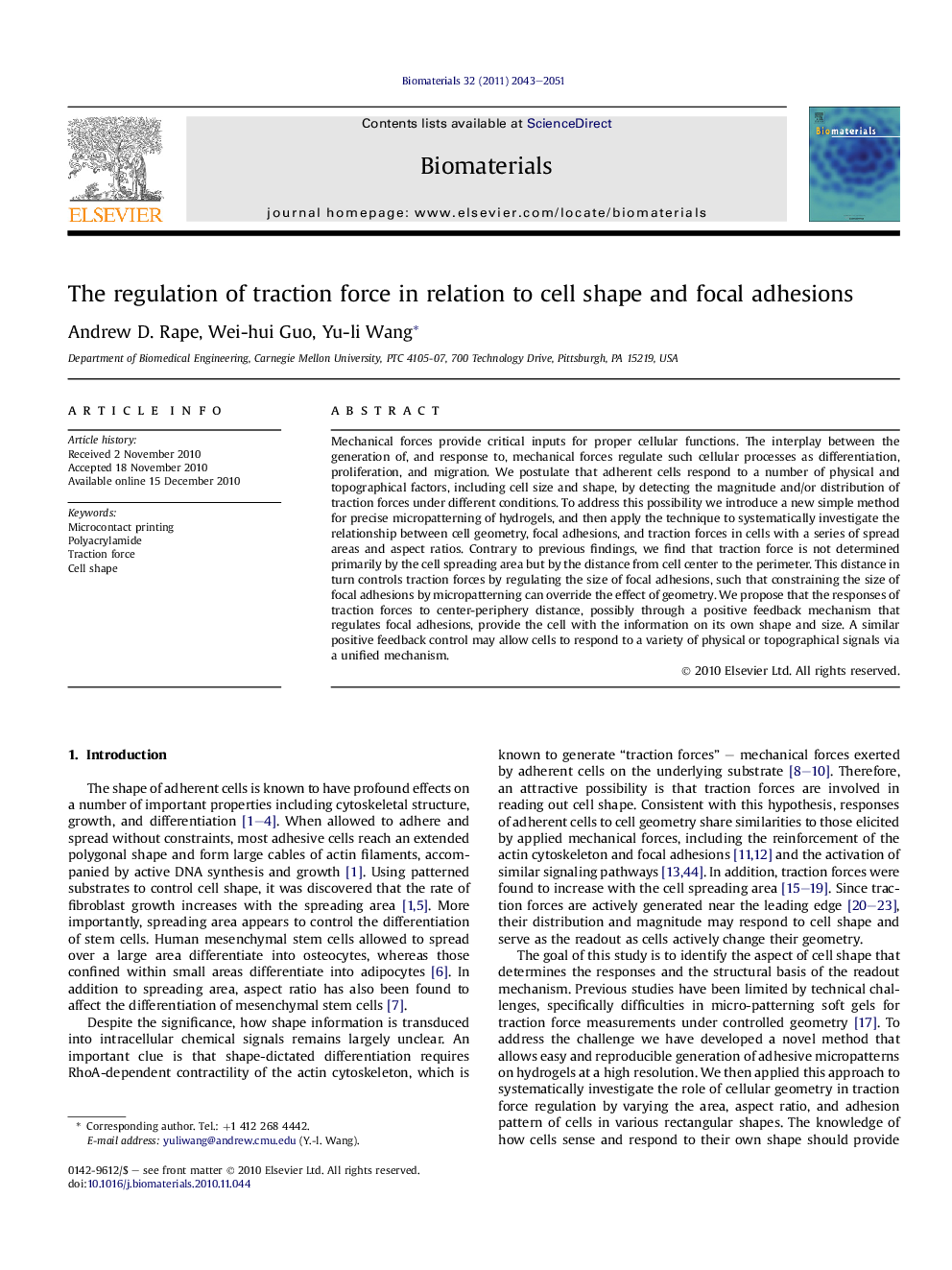| Article ID | Journal | Published Year | Pages | File Type |
|---|---|---|---|---|
| 10229931 | Biomaterials | 2011 | 9 Pages |
Abstract
Mechanical forces provide critical inputs for proper cellular functions. The interplay between the generation of, and response to, mechanical forces regulate such cellular processes as differentiation, proliferation, and migration. We postulate that adherent cells respond to a number of physical and topographical factors, including cell size and shape, by detecting the magnitude and/or distribution of traction forces under different conditions. To address this possibility we introduce a new simple method for precise micropatterning of hydrogels, and then apply the technique to systematically investigate the relationship between cell geometry, focal adhesions, and traction forces in cells with a series of spread areas and aspect ratios. Contrary to previous findings, we find that traction force is not determined primarily by the cell spreading area but by the distance from cell center to the perimeter. This distance in turn controls traction forces by regulating the size of focal adhesions, such that constraining the size of focal adhesions by micropatterning can override the effect of geometry. We propose that the responses of traction forces to center-periphery distance, possibly through a positive feedback mechanism that regulates focal adhesions, provide the cell with the information on its own shape and size. A similar positive feedback control may allow cells to respond to a variety of physical or topographical signals via a unified mechanism.
Related Topics
Physical Sciences and Engineering
Chemical Engineering
Bioengineering
Authors
Andrew D. Rape, Wei-hui Guo, Yu-li Wang,
